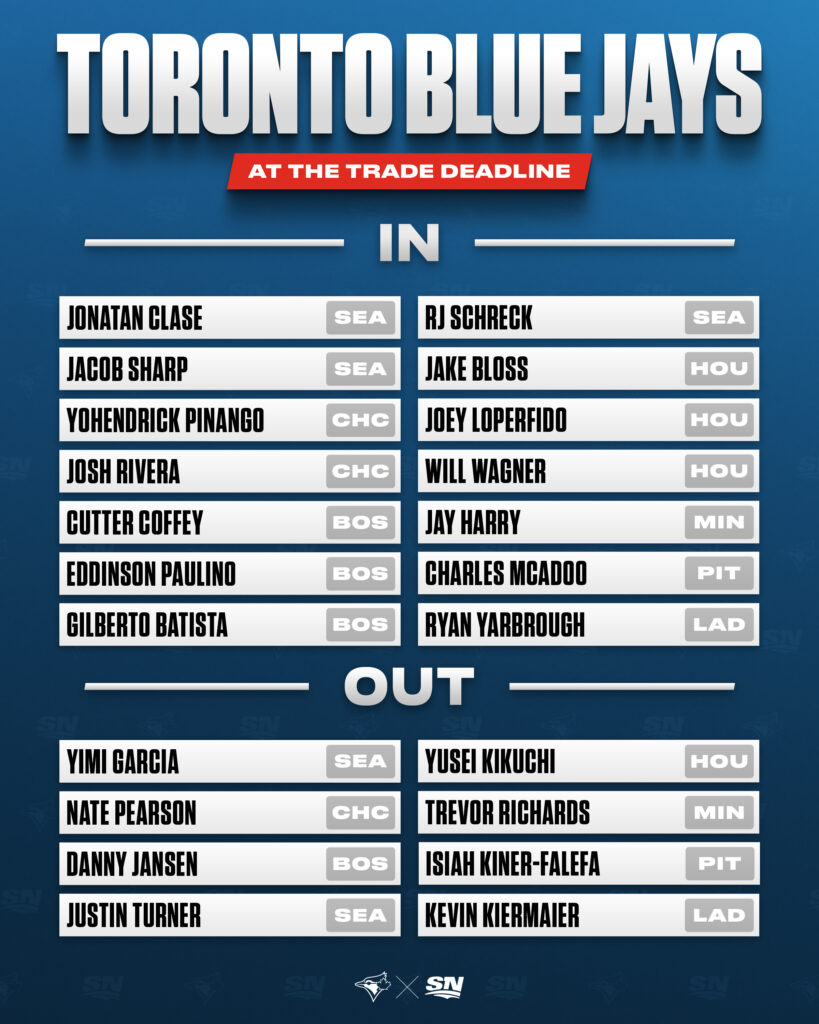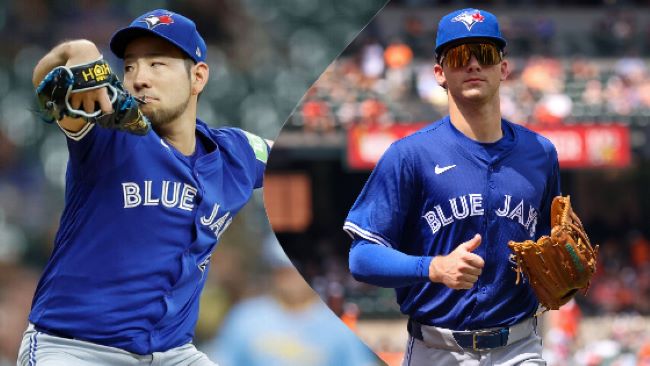The trade deadline has come and gone, and for the first time since 2019 the Blue Jays were sellers at this year’s deadline. This season has not gone the way anyone hoped or predicted, but with the Jays being last in the AL East, and 8 games out of a playoff spot, the decision to sell was an easy one. The only question for the Jays going into this deadline therefore was not would they be trading, but rather, who were they going to trade?
Guys that are set to be free agents at the end of the season like Kikuchi, Turner, and Kiermaier were most certainly going to be dealt, but would the Jays stop there? Would they trade any players with more years of control, and would they trade Vladimir Guerrero Jr.? GM Ross Atkins had made it known that he had no intention on trading Vladdy or Bo at the deadline, and that the team plans to compete in 2025, as opposed to going through a rebuild. However, it only takes one team with a Godfather-like offer for the Jays to reconsider.
When the clock struck 6:00pm on July 30th and the dust settled, Vladdy was still a Blue Jay, the Jays traded all their pending free agents, and the only players with at least one more year of control that were dealt were RHP Nate Pearson, and INF Isiah Kiner-Falefa. In total, the Jays made eight trades, sending eight players out, and bringing in fourteen. Now that a week has passed since the deadline, it’s time that we take a deeper look at a couple of the noteworthy players the Jays received.

The most notable trade the Jays made was trading Yusei Kikuchi to Houston for RHP Jake Bloss, IF Will Wagner, and OF Joey Loperfido. Whereas Astro fans feel that their team gave up a little too much for a two-month rental, this has been regarded as a significant return for Toronto.
Jake Bloss was a third-round pick in last year’s draft and quickly ascended through the minor leagues. He made his major league debut earlier this season for the Astros, and had a couple of starts before going back to Triple-A. He is currently with the Jays’ Triple-A team in Buffalo, but it could only be a matter of time before he is up with the big-league club. Bloss likely won’t be an ace, as he is projected to be a back-of-the-rotation starter, but trading two-months of Kikuchi for six years of what they hope to be a solid fixture in their rotation is a trade you make any day of the week.
Will Wagner is the son of All-Star closer Billy Wagner and is described as a bat-first player with good plate discipline and contact skills. He hasn’t hit for a lot of power, but is hitting .307/.424/.429 in Triple-A, and could develop into a useful bench player that can play multiple positions.
Joey Loperfido was the Astros’ 6th ranked prospect and could prove to be the most interesting piece of the deal. He debuted with the Astros earlier this season after hitting .272/.365/.568 in Triple-A, but has struggled a little bit in his brief time in the majors. His performance in the minors suggests that he’s better than his small major-league sample implies, plus he can play all three outfield positions, along with second base, which can make him a very valuable player. He joined the Blue Jays right away and has been hitting at the top of the lineup in the handful of games he has played thus far. You can expect him to get significant playing time going forward as he figures to be a prominent piece of the puzzle, as the Jays use the rest of the season to see what they have for 2025 and beyond.
While none of these guys project to be perennial All-Stars, all three have potential for some upside, and acquiring them for two months of Kikuchi is a deal that almost every GM would make.
Another name to keep an eye on is Charles McAdoo, who the Jays acquired from the Pittsburgh Pirates for Isiah Kiner-Falefa. He was a 13th-round pick last season and hit .336/.415/.561 in High-A this season before being promoted to Double-A. He’s cooled off a little bit, but still hits the ball very hard which is a positive, because if he can elevate the ball, it should translate into more extra-base hits.
All in all, the Jays had a fine trade deadline, as they did what they had to do. While this isn’t the position they wanted to be in, they were able to make positive additions to what has become a lackluster farm system. Only time will tell how the Jays really did on any of these trades, but of the 14 players brought in, even if they only hit on a handful, it will still be considered a success.

